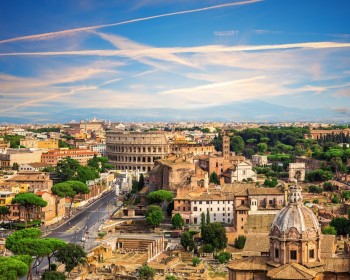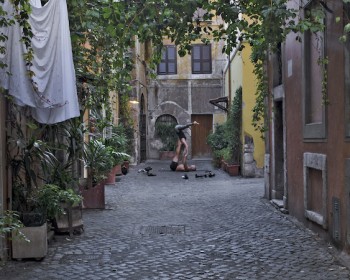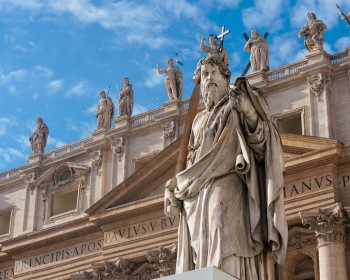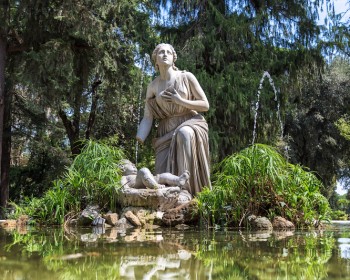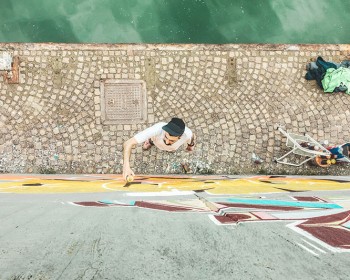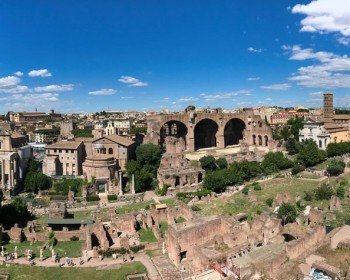Whether it is visiting famous museums or tourist hotspots like the Colosseum, Spanish Steps or Trevi Fountain, you should visit Rome at least once in your life. This city is alive from day to night, on rainy and shiny days.
Rome is a leaving testimony to the greatness of its past. And of course its Christian side is one of the most famous Roman features.
Whether it is the first time you visit Rome or you just want to know more about the city, here some details about one of its district: Borgo Pio (“borgo” literally means hamlet).
History of Borgo Pio Neighborhood
Located along the right bank of the Tiber river, Borgo Pio is a trapezoid-shaped little district near to Vatican City. Due to its coat of arms representing a crouched lion the district is known with the name of Leonine city. Even if it is principally recognized for being a hamlet transformed into the 14th district of Rome by Pope Sixtus V. The name Borgo Pio derives from the name of its main street, linking via di Porta Castello to via di Porta Angelica like a chord.
Initially built outside the original pomerium, that is to say the religious boundary around the ancient city of Rome, was used as a burial place. During the imperial age people started to build their houses with gardens in Borgo Pio, amusement places and bridges to connect the places beyond the Tiber as well. In the end, after the martyr of Saint Peter during the first persecution of the Christians, Borgo Pio started to be a pilgrim destination. Formerly it has been subjected to barbaric raids and devastations.
What to visit
The major attraction of the district is Castel Sant’Angelo, a massive fort used both as the mausoleum of Hadrian and a papal stronghold of the Renaissance. Don’t miss the chance to take a walk on the Sant’Angelo bridge! In the north side of Borgo neighborhood, you can appreciate a marvelous example of Art Nouveau architecture dating back to the 20th century: the Palace of Justice (nicknamed Palazzaccio by the Romans), the location of the Italian Supreme Court of Cassation, located exactly in Cavour square. In the southern side of the same district, it is placed the Ospedale di Santo Spirito (literally the Hospital of the Holy Spirit), the oldest hospital in Rome. Yes, I know it is weird to visit a Hospital! But there you can admire a great amount of Renaissance frescoes. Furthermore the Hospital hosts lots of Baroque works and the National Historic Museum of Healthcare Art.
Last but not least, take advantage of the proximity to the Vatican City and don’t miss a visit to Saint Peter’s Basilica and the Vatican Museums!
What to do in Borgo Pio
Thanks to its strategic position Borgo Pio offers different options. You can choose to go shopping in the near Cola di Rienzo street where you can find markets, bars, furniture stores and clothing boutiques. Nevertheless, walking through the alleys around Borgo Pio there are different tiny sewing shops and bike shops. If you are looking for souvenir shops, near via della Conciliazione, in the southern part, you can appreciate some of the best souvenir shops in Rome, both religious and laic.
Borgo Pio is not known for its restaurants, but on the main street there are some renowned places. It will be a little bit difficult to avoid tourist menu, but for a quick meal Guido Paninoteca gives you the chance to create your perfect roll. Near Cavour square Da Cesare offers delicious fish menu while crossing the same street you will find Enoteca Costantini, an excellent wine-bar and L’Arcangelo, one of the best restaurants in Rome. Furthermore, the proximity to Trastevere district and to the city center, Borgo Pio gives you the best options for your nightlife!
How to get there
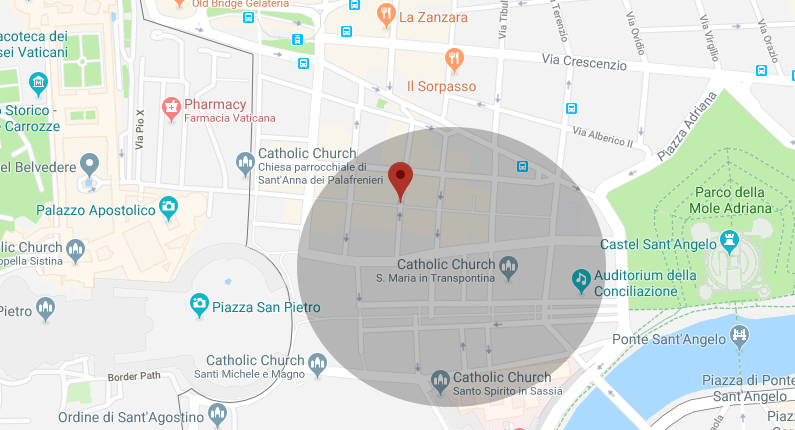
The quickest way to get to Borgo Pio is through the underground Line A – the orange one –. You can get off at Ottaviano station and walk for about 10 minutes. Thanks to the vicinity to Risorgimento square you can take the 19 tram and some buses like the 23, 81, 46, 492. You can buy the ticket at newsstands and even in some bars. Double check on the ATAC website to be sure which bus will bring you wherever you would like to go!
Peculiarities
In Borgo district the main streets course from east to west and their name is not “via” (street in Italian) but “borgo” raising this district over the others, maybe for both its proximity to the Holy See and for the places it links.
In 1852 Pope Leo IV was the first Pope to commit the construction of new walls around the city and he marked the new boundaries barefoot. Moreover to highlight the importance of his gesture he moved there some rich families creating a separated city – the Leonine one! –.
The district had its biggest transformation before the second world war broke out. De facto in 1936 offices and large streets were built after the demolition of the previous buildings that dated back to Renaissance.
Did you already know Borgo Pio? Have you ever been there? Keep on reading this blog for more details about other districts in Rome.



